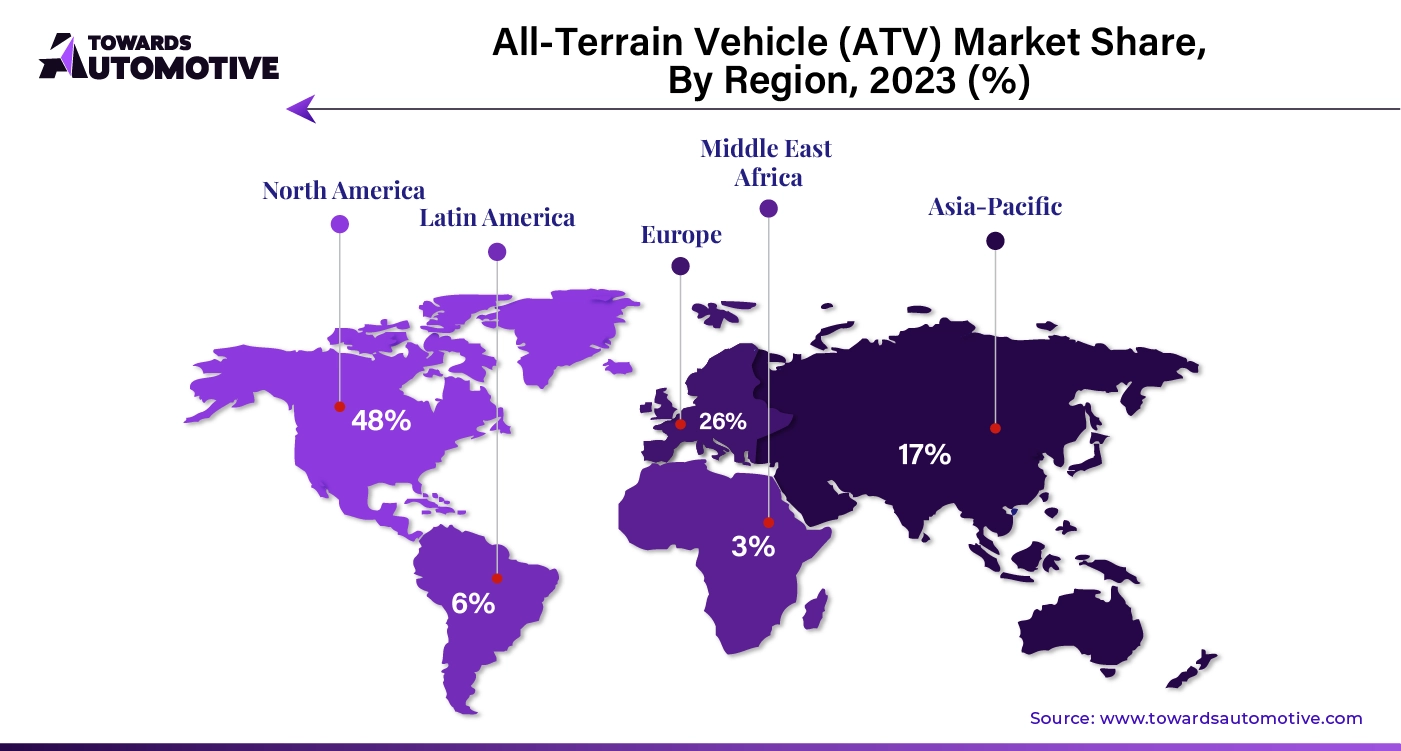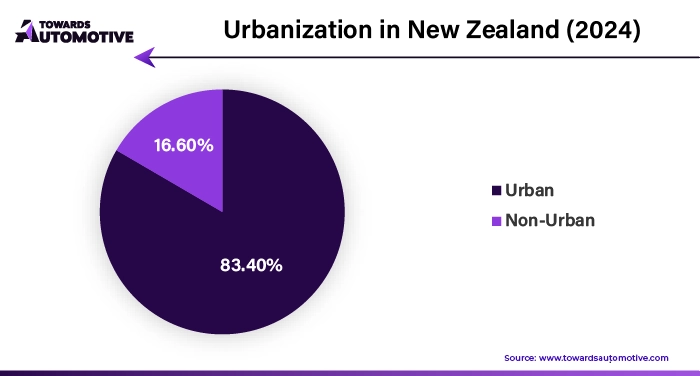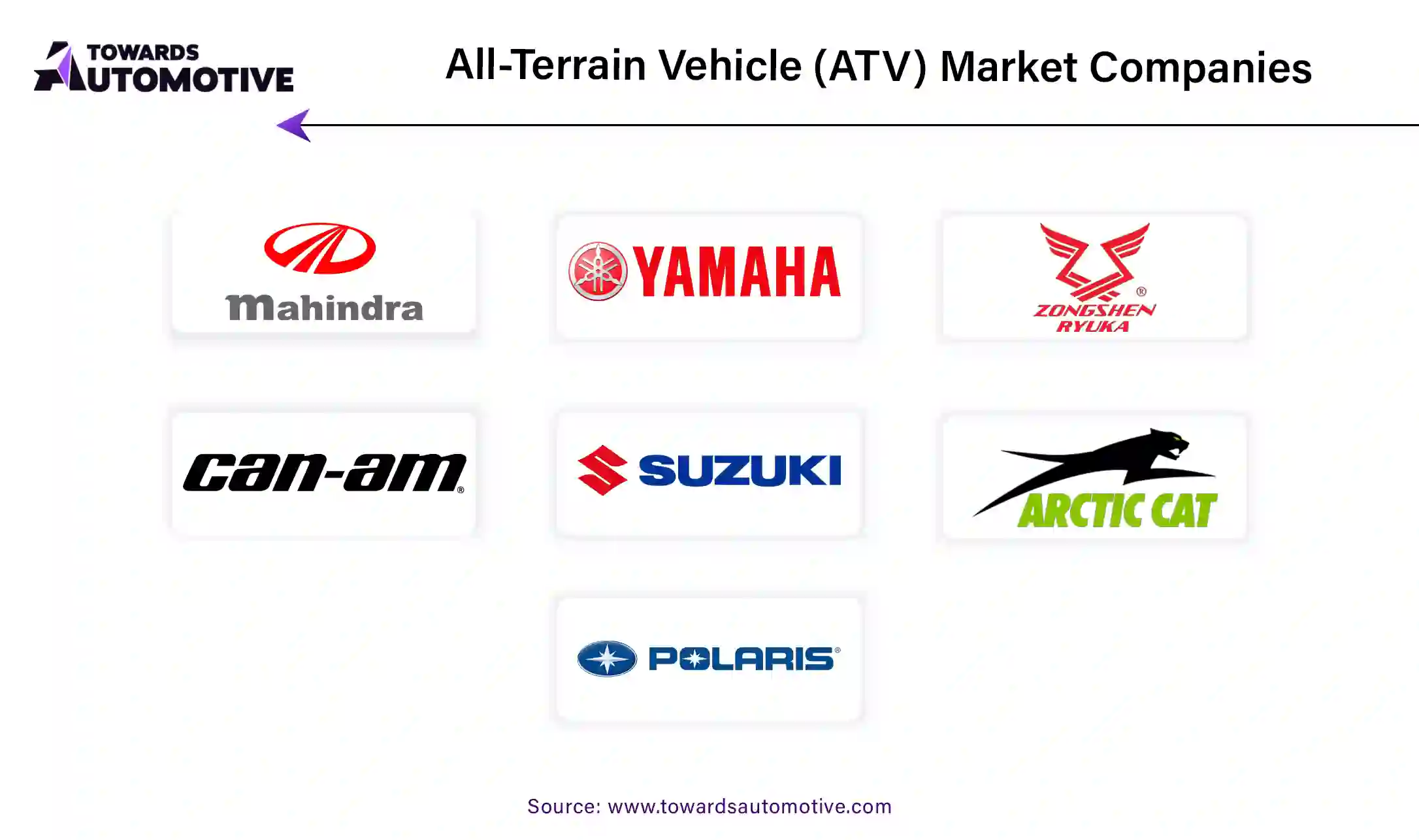March 2025

Senior Research Analyst

Reviewed By
The all-terrain vehicle (ATV) market is projected to reach USD 7.52 billion by 2034, growing from USD 2.95 billion in 2025, at a CAGR of 10.94% during the forecast period from 2025 to 2034.

The All-Terrain Vehicle (ATV) market has experienced significant growth in recent years, driven by a surge in outdoor recreational activities, increasing demand for off-road vehicles, and advancements in ATV technology. ATVs are popular for their ability to navigate through a variety of terrains, including mud, snow, sand, and gravel, making them ideal for both recreational and utility purposes. The growing popularity of off-road sports, hunting, and farming has propelled the demand for these versatile vehicles. In addition to leisure activities, ATVs are increasingly used in commercial sectors such as agriculture, forestry, and mining due to their ability to traverse rough and difficult landscapes.
The market's growth is also supported by rising disposable incomes, which allow consumers to invest in recreational vehicles, as well as by a shift toward more environmentally friendly off-road vehicles, with electric ATVs gaining traction. Additionally, innovations such as advanced suspension systems, enhanced safety features, and fuel-efficient engines have contributed to the expanding appeal of ATVs.
As more manufacturers enter the market, competition has intensified, driving technological advancements and improving the overall performance and accessibility of ATVs. With increasing demand across both recreational and professional sectors, the global ATV market is poised for continued expansion, making it a dynamic and evolving industry with significant opportunities for growth in the coming years.
AI is playing an increasingly important role in the All-Terrain Vehicle (ATV) market by enhancing vehicle performance, safety, and overall user experience. One key application is the integration of AI-powered autonomous driving systems, allowing ATVs to operate more efficiently and safely in challenging terrains. These systems use AI algorithms to analyze data from sensors such as cameras, LiDAR, and GPS to navigate and respond to the environment, offering more precise control and reducing the risk of accidents in remote or difficult landscapes.
Additionally, AI is being applied to improve vehicle diagnostics and predictive maintenance. AI-powered systems can monitor various components of the ATV in real time, predicting potential failures or maintenance needs before they occur, which reduces downtime and enhances vehicle reliability. Smart navigation systems, powered by AI, provide users with optimized routes, taking into account terrain type, obstacles, and other variables, further improving the ATV's performance and ease of use.
AI also aids in enhancing vehicle customization, allowing manufacturers to offer smarter, more personalized features tailored to individual user needs. For instance, AI can adjust suspension settings based on terrain conditions or even customize engine power and torque to optimize performance based on the rider's style or the type of off-roading activity.
The rising use of All-Terrain Vehicles (ATVs) in the agricultural sector is significantly driving the growth of the all-terrain vehicle (ATV) market. ATVs offer farmers enhanced mobility and efficiency in managing large agricultural land areas, as they can easily navigate rough terrains, mud, and uneven fields. These vehicles are used for tasks such as crop monitoring, transporting goods, pest control, and irrigation maintenance, reducing the need for labor-intensive methods and improving overall productivity. The versatility and durability of ATVs make them ideal for various agricultural applications, especially in remote or hard-to-reach areas where traditional vehicles may struggle.
Additionally, the increasing demand for precision farming and the adoption of advanced technologies like GPS and IoT in agricultural practices have further boosted the utility of ATVs in modern farming. As agriculture becomes more mechanized and the need for cost-effective, reliable equipment grows, the use of ATVs is expected to continue expanding. This trend is particularly evident in North America, where ATVs are increasingly integrated into agricultural operations, contributing to the market's growth. As more farmers recognize the benefits of ATVs for streamlining tasks and reducing operational costs, the demand for these vehicles in agriculture is expected to remain strong, fostering sustained growth in the ATV market.
The All-Terrain Vehicle (ATV) market faces several restraints, including environmental concerns related to emissions and land damage caused by off-road riding. Strict government regulations on noise levels and emissions in some regions also hinder market growth. Additionally, high initial costs of ATVs and maintenance expenses may limit consumer adoption, especially in developing regions. Safety concerns, particularly for inexperienced riders, and the risk of accidents also contribute to market challenges, impacting the growth potential of the ATV industry.
The development of semi-autonomous All-Terrain Vehicles (ATVs) is creating significant opportunities in the all-terrain vehicle (ATV) market by introducing advanced features that enhance both convenience and safety for users. Semi-autonomous ATVs incorporate technologies such as GPS, collision avoidance systems, and automated navigation, allowing them to perform tasks with minimal human intervention. This is particularly beneficial in applications where precision and efficiency are critical, such as agriculture, construction, and surveillance. These vehicles can be programmed to navigate rugged terrains autonomously, reducing the need for constant operator attention and improving productivity. In the agricultural sector, for instance, semi-autonomous ATVs can be used for crop monitoring, irrigation management, and transporting materials across large plots of land, offering a more efficient alternative to traditional manual methods.
Additionally, semi-autonomous ATVs can help reduce operator fatigue and improve safety by reducing the risk of accidents in challenging environments. As technology continues to evolve, these vehicles are expected to feature enhanced AI and sensor capabilities, further expanding their application scope. With growing demand for automation in various industries and the increased focus on enhancing the safety and efficiency of outdoor recreational activities, semi-autonomous ATVs are positioned to play a key role in driving growth in the ATV market. As manufacturers continue to innovate, the appeal of these advanced vehicles is likely to attract new segments of consumers, further boosting market opportunities.
The 400 - 800cc segment held a significant share of the market. The 400-800cc segment is a key driver of growth in the All-Terrain Vehicle (ATV) market due to its balance of power, versatility, and affordability. Vehicles in this engine capacity range offer a perfect combination of performance and accessibility, making them popular among both recreational riders and those using ATVs for work-related tasks. These mid-range ATVs provide enough power to handle a variety of terrains such as muddy trails, steep inclines, and rocky paths while still being manageable for riders with intermediate skills. This makes them ideal for outdoor enthusiasts seeking thrilling adventures, as well as for agricultural and industrial applications, where they are used for tasks including hauling, farming, and maintenance work in challenging environments.
The 400-800cc segment also strikes a balance in terms of price, making it more accessible to a broader demographic, from individual consumers to small businesses. The lower running costs compared to higher-powered ATVs further enhance their appeal, especially in regions with emerging ATV markets. As demand for outdoor recreation and utility vehicles grows, the 400-800cc segment remains a dominant force in the ATV market, providing a versatile, cost-effective solution that meets the needs of a wide range of consumers, including hobbyists, adventurers, and commercial users alike. This segment’s continued innovation and availability contribute significantly to the overall growth of the global ATV market.
The recreational segment led the industry. The recreational segment is a major driver of growth in the All-Terrain Vehicle (ATV) market, as increasing demand for outdoor adventure and leisure activities continues to rise globally. ATVs provide an exhilarating experience for outdoor enthusiasts, offering the freedom to explore rugged terrains, trails, and remote areas that are otherwise difficult to access. As people seek more diverse recreational experiences, the versatility of ATVs in various environments including sandy dunes and mountainous paths has made them a preferred choice for outdoor adventures such as trail riding, off-road racing, and camping. This segment's growth is further fueled by the expanding culture of adventure tourism, where people are increasingly engaging in activities like ATV tours in scenic, wilderness destinations.
Additionally, technological advancements in ATV design such as improved suspension systems, better engine efficiency, and enhanced safety features make recreational vehicles more accessible, enjoyable, and safe for riders of all experience levels. The growing popularity of ATV sports, including competitive racing and motocross, has also added momentum to this market segment, attracting new consumers and enthusiasts. As disposable incomes rise, particularly in developing regions, more individuals are investing in recreational ATVs to satisfy their adventurous spirit. The increasing focus on outdoor recreation, coupled with the increasing adoption of ATVs in leisure activities, ensures the continued growth and prominence of the recreational segment in the global ATV market.

North America dominated the all-terrain vehicle (ATV) market. Rising demand for outdoor recreation, growing adoption in agricultural and industrial applications, and technological advancements are key factors driving the growth of the All-Terrain Vehicle (ATV) market in North America. The increasing popularity of outdoor recreational activities, such as off-roading, camping, and hunting, is fueling the demand for ATVs, especially in the U.S. and Canada, where off-road trails and recreational areas are abundant. Consumers are investing in ATVs to explore rugged terrains, making them ideal for adventure sports and leisure activities. Furthermore, ATVs have seen a surge in adoption for agricultural and industrial uses. In rural areas, these vehicles are used for crop monitoring, land maintenance, and transporting goods across difficult terrains, offering enhanced efficiency and accessibility. The agricultural sector, in particular, benefits from ATVs for their versatility and cost-effectiveness in managing vast farmlands.
Additionally, technological advancements in ATV design and performance are significantly contributing to market growth. Manufacturers are incorporating electric drivetrains, GPS navigation, and improved safety features, enhancing the overall ATV experience. These innovations are attracting environmentally conscious consumers and those seeking a safer, more efficient riding experience. Hence, the above-mentioned factors are propelling the growth of the ATV market in North America.
Asia Pacific is expected to grow a significant CAGR during the forecast period. Urbanization, rising disposable income, and adventure tourism are significant drivers of the All-Terrain Vehicle (ATV) market growth in the Asia Pacific (APAC) region. As urbanization accelerates across countries such as China, India, and Southeast Asian nations, more people are relocating to cities, resulting in a growing interest in outdoor recreational activities as an escape from urban environments. This urban migration fuels demand for ATVs for leisure purposes, as people seek adventure and exploration in rural and natural settings. Rising disposable income across APAC, particularly in emerging markets, has further contributed to the increasing affordability of recreational vehicles like ATVs. As the middle class expands, consumers now have more spending power to invest in high-quality ATVs, driving market growth in both developed and developing economies.
Additionally, the rapid growth of adventure tourism in the region has created new opportunities for ATVs. Popular tourist destinations in countries like Thailand, Japan, and New Zealand are witnessing a rise in adventure tourism, where ATV rentals are an integral part of offering thrilling outdoor experiences. Tourists increasingly seek ATV rides through rugged terrains, beaches, and forests, boosting demand for these vehicles. Thus, urbanization, rising disposable income and the expansion of adventure tourism are propelling the ATV market in APAC, making it a key region for the future growth of the industry.


By Engine Type
By Application
By Region
March 2025
March 2025
March 2025
March 2025
Dr. Arjun Patel is a distinguished expert in the automotive industry, holding advanced degrees in Automotive Engineering and Mechanical Engineering. His expertise spans automotive market dynamics, technological advancements, and sustainable practices. Dr. Patel excels in conducting in depth research and analysis on market trends, consumer preferences, and the economic implications within the automotive sector. He is renowned for his insightful publications on topics such as electric vehicles, autonomous driving technologies, and the evolution of sustainable transportation solutions. Dr. Patels research contributions have significantly advanced understanding in the field, earning him recognition as a leading authority in automotive research and analysis.
We offer automotive expertise for market projections and customizable research, adaptable to diverse strategic approaches.
Contact Us